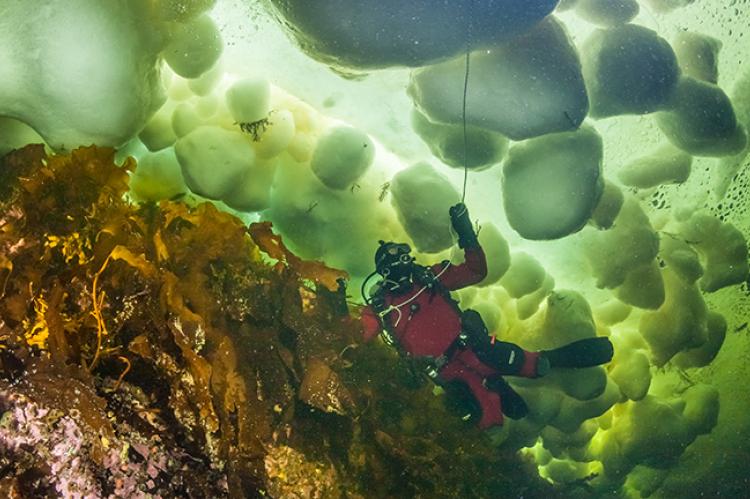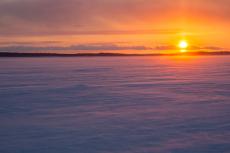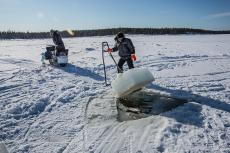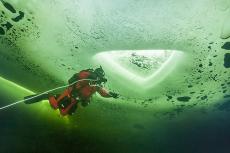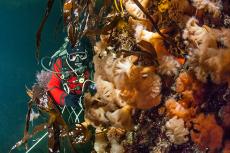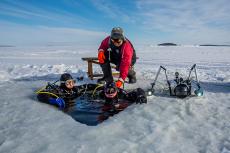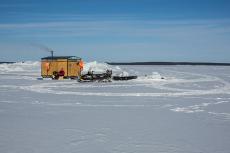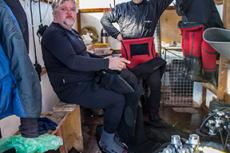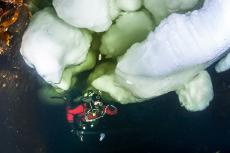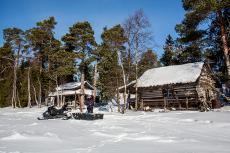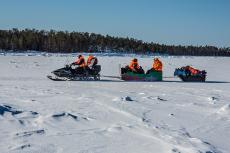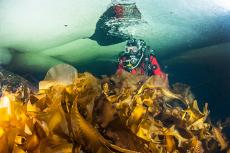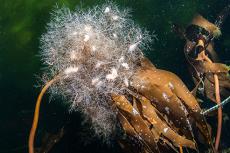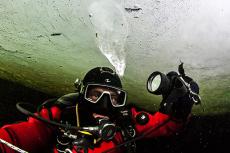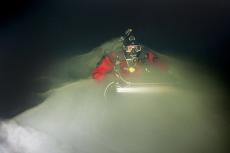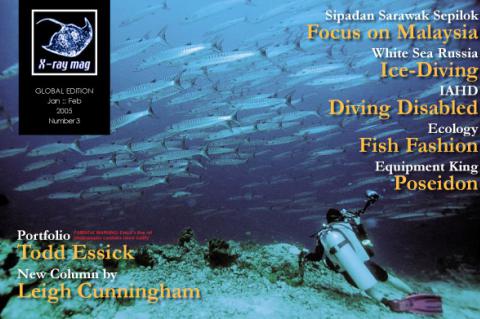Icediving in the White sea
The White Sea has sublime water clarity. It forms indescribably beautiful ice and peculiar fantastical ice shapes. The water temperature hovers around 0-10°C and nurtures plenty of marine life, which makes the White Sea one of the best spots in Europe for ice-diving.
The main attraction in this scenic land is the White Sea. There is a serene beauty in winter, with the sea’s undulating coastline where glacier movement has carved the landscape, fishing boats frozen along the shore, weather-worn cabins with wood smoke rising from their chimneys and the clinking silence above the ice-covered bays.
The fauna of the sea is reflective of the temperate to artic climate. Life thrives in a vivid and peculiar underwater world. Rocks are covered with soft corals, actinia and hydroids. Cracks in between stones reveal lots of starfish, crabs, shrimps, hermit crabs and sleeping fish. Among the fish species are lancet fish, rockfish, flounder, herring and cod.
White whales, seals, Greenland seals, sea-hares can also be spotted at the White Sea. The white whale is actually classified as a dolphin in Russia, even though Europeans consider it part of the whale family. Unlike dolphins, the white whale has active joints in the neck area that help it to easily turn its head.
Above water, one can spot squirrels and hares, bear, wolf, lynx, deer and elk. Bird watchers can find hazel-grouse, black-cock, partridge, wood-grouse, ducks, sandpipers and nesting ember geese at various times of the year. Deep and extensive forests of coniferous trees cover the region and filter the air. It is amazingly clean and fresh air.
Dive sites
A variety of dive sights and wrecks can be reached by one of the dive center’s cutter ships within an hour or more from the base. Depending on the dive site and your qualifications, you can see a range of things, such as flat bottom landscapes with large kelp, sheer walls with actinia, ascidium, soft corals and bryozoa, small sea-urchins and White Sea crabs, lots of small sea animals, starfishes and a grotto.
Divers reach depths from 15 to 35 meters. The deeper the dive, the darker and colder it gets, so appropriate gear is a must.
Wreck divers can explore a sunken fishing seiner on a shallow dive where numerous fish such as lancet fish, cod, rockfish, flounder, and small fishes make their home. Following are some of the most interesting dive sites to explore.
Download the full article ⬇︎
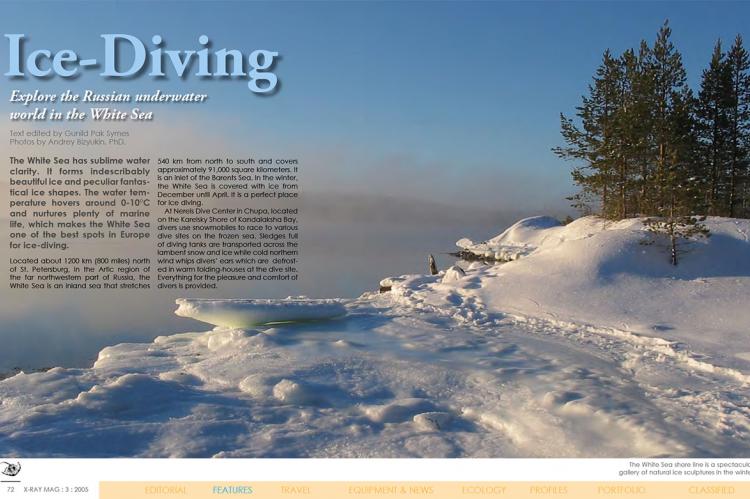
Originally published
X-Ray Mag #3
This old issue is currently only available in one format


